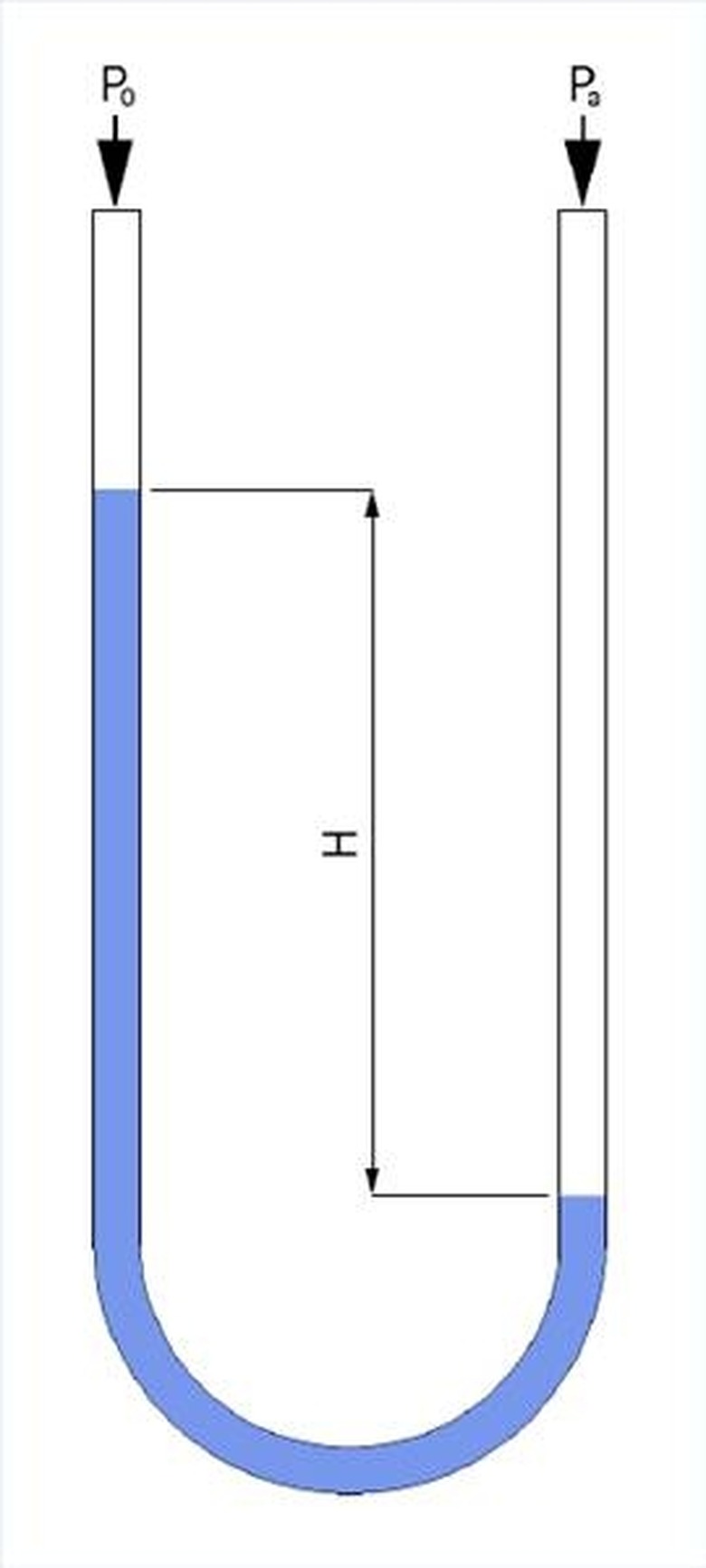How To Read A Manometer
A manometer is a device that measures pressure with a column of liquid. A simple manometer consists of a U-shaped tube that contains a liquid. If the pressure is different between the two ends of the tube, the liquid will move away from the source of greater pressure. The instructions that follow assume one side of the tube is open to the air, and a source of positive pressure is connected to the other side.
Step 1
Measure the distance between the liquid's current level on one side and its established zero point, which may be indicated by a mark on the tube. Multiply this distance by 2, because the surface of the liquid on the right goes down by the same distance that the left side goes up; the total distance of the liquid movement is therefore twice the measured movement of one side.
Step 2
Determine the pressure in water inches. Assuming the liquid in the manometer is water, this is simply the result from step 1 in inches. Although non-standard, this is a common measure of pressure since it can be determined by a direct measurement.
Step 3
First, convert the non-metric measurements to metric ones. Then, convert the manometer reading to standard units of pressure. Use the standard formula p = d * h * 9.8 where "p" is the pressure in pascals, "d" is the density of the liquid in the tube in kilograms per cubic meter, "h" is the doubled height difference in meters from step 1 and 9.8 is the downward force of gravity, 9.8 meters per second squared. So if you measure a height difference of .01 meters, double it to .02, multiply by 1,000 kg per cubic meter for water, and multiply by 9.8 to get 196 pascals of pressure.
TL;DR (Too Long; Didn't Read)
Note that the above calculation gives a gauge pressure that is relative to normal atmospheric pressure. When one side of the tube is open and the liquid is at the same level on both sides, the pressure on the connected side is standard atmospheric pressure — 14.7 psi or 101.325 kilopacals at sea level. To determine absolute pressure, you must add standard pressure to your results. For the above example, the positive pressure of 196 pascals is 196 + 101,325 = 101,521 pascals of absolute pressure. If your elevation is substantially higher or lower than sea level, get a barometer reading and use its indicated pressure instead of 101.325 kilopascals.
Cite This Article
MLA
Robinson, Allan. "How To Read A Manometer" sciencing.com, https://www.sciencing.com/read-manometer-5250401/. 24 April 2017.
APA
Robinson, Allan. (2017, April 24). How To Read A Manometer. sciencing.com. Retrieved from https://www.sciencing.com/read-manometer-5250401/
Chicago
Robinson, Allan. How To Read A Manometer last modified March 24, 2022. https://www.sciencing.com/read-manometer-5250401/
